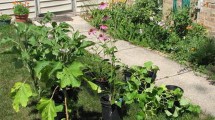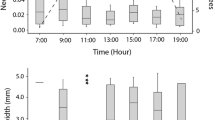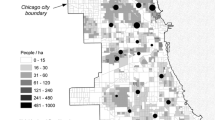Abstract
Flowering weeds, though often deemed undesirable in turfgrass lawns, provide food resources for declining pollinator populations in urbanized landscapes. We sampled bees and other pollinators directly from flowering common dandelion (Taraxacum officinale) and white clover (Trifolium repens) in lawns of similar character in central Kentucky USA to identify species likely to be exposed if such weeds are inadvertently oversprayed during application of lawn insecticides. We also tested the hypothesis that pollinator assemblages visiting spring-blooming white clover in urban and suburban lawns are as species-rich and diverse as in more rural lawn settings. We collected about 50 different species of insect pollinators, including 37 species of bees, from the aforementioned lawn weeds. Two of the six species of bumble bees (Bombus spp.) collected are considered uncommon and possibly in decline. Hover flies (Syrphidae), honey bees (Apis mellifera), and non-Apid wild bees predominated on dandelions whereas proportionately fewer hover flies and more A. mellifera and Bombus spp. visited white clover, especially in summer. Species richness of bees visiting white clover was similar in urban, suburban or periurban-rural lawns, although A. mellifera were proportionately more abundant, and Bombus spp. were less abundant, with increasing percentage of hardscape in surrounding areas. Fostering public awareness of the diversity of bees and other pollinators that visit flowering lawn weeds might help nurture a sociocultural shift toward more pollinator-friendly lawn care practices.




Similar content being viewed by others
References
Ahrné K, Bengtsson J, Elmqvist T (2009) Bumble bees (Bombus spp) along a gradient of increasing urbanization. PLoS One 4:e5574
Analytical Software (2013) Statistix user’s manual. Analytical Software, FL
Banaszak-Cibicka W, Żmihorski M (2012) Wild bees along an urban gradient: winners and losers. J Insect Conserv 16:331–343
Bates AJ, Sadler JP, Fairbrass AJ, Falk SJ, Hale JD, Matthews TJ (2011) Changing bee and hoverfly pollinator assemblages along an urban-rural gradient. PLoS One 6:e23459
Biesmeijer JC, Roberts SPM, Reemer M, Ohlemüller R, Edwards M, Peeters T, Schaffers AP, Potts SG, Kleukers R, Thomas CD, Seetele J, Kunin WE (2006) Parallel declines in pollinators and insect-pollinated plants in Britain and the Netherlands. Science 313:351–354
Blaine TW, Clayton S, Robbins P, Grewal PS (2012) Homeowner attitudes and practices towards residential landscape management in Ohio, USA. Environ Manag 50:257–271
Bormann FH, Balmori D, Geballe GT (2001) Redesigning the American lawn; A search for environmental harmony, 2nd edn. Yale University Press, CT
Braaker S, Ghazoul J, Obrist MK, Moretti M (2014) Habitat connectivity shapes urban arthropod communities: the key role of green roofs. Ecology 95:1010–1021
Brede D (2000) Turfgrass maintenance reduction handbook: sports, lawns, and golf. Wiley, NY
Brown T, Kegley S, Archer L, Finke-Haynes T, Olivastri B (2014) Gardeners beware. Bee-toxic pesticides found in “bee-friendly” plants sold at garden centers across the U.S. and Canada. http://libcloud.s3.amazonaws.com/93/3a/3/4738/GardenersBewareReport_2014.pdf. Accessed 7 July 2014
Cameron SA, Lozier JD, Strange JP, Koch JB, Cordes N, Solter LF, Griswold TL (2011) Patterns of widespread decline in North American bumble bees. Proc Natl Acad Sci 108:662–667
Caron DM (2007) The front lawn—add clover for bees. Am Bee J 147:71–72
Carpenter PJ, Meyer MH (1999) Edina goes green part III: a survey of consumer lawn care knowledge and practices. HortTechnology 9:491–494
Colla S, Richardson L, Williams P (2011) Bumble bees of the Eastern United States. http://www.fs.fed.us/wildflowers/pollinators/documents/BumbleBeeGuideEast2011.pdf. Accessed 10 July 2014
Colwell RK (2006) Estimate S: Statistical estimation of species richness and shared species from samples. Version 8. Persistent URL < purl.oclc.org/estimates>
Dearborn DC, Kark S (2010) Motivations for conserving urban biodiversity. Conserv Biol 24:432–440
Discover Life (2014) www.discoverlife.org; accessed 2 July 2014
Dixon K (2009) Pollination and restoration. Science 325(5940):571–573
Dobbs EK, Potter DA (2014) Conservation biological control and pest performance in lawn turf: does mowing height matter? Environ Manag 53:648–659
Dover J, Settele J (2009) The influences of landscape structure on butterfly distribution and movement: a review. J Insect Conserv 13:3–27
Fetridge ED, Ascher JS, Langellotto GA (2008) The bee fauna of residential gardens in a suburb of New York city (Hymenoptera: apoidea). Ann Entomol Soc Am 101:1067–1077
Frankie GW, Thorp RW, Schindler M, Hernandez J, Ertter B, Rizardi M (2005) Ecological patterns of bees and their host ornamental flowers in two northern California cities. J Kans Entomol Soc 78:227–246
Gardiner MM, Burkman CE, Prajzner SP (2013) The value of urban vacant land to support arthropod biodiversity and ecosystem services. Environ Entomol 42:1123–1136
Gathmann A, Tscharntke T (2002) Foraging ranges of solitary bees. J Anim Ecol 71:757–764
Gels JA, Held DW, Potter DA (2002) Hazards of insecticides to the bumble bees Bombus impatiens (Hymenoptera: apidae) foraging on flowering white clover in turf. J Econ Entomol 95:722–728
Gilbert FS (1981) Foraging ecology of hoverflies: morphology of the mouthparts in relation to feeding on nectar and pollen in some common urban species. Ecol Entomol 6:245–262
Google Earth (2014) Google Earth. http://www.google.com/earth/; accessed 29 July 2014
Gotelli NJ, Colwell RK (2011) Estimating species richness. In: Magurran AE, McGill BJ (eds) Biological diversity: Frontiers in measurement and assessment. Oxford University Press, NY, pp 39–54
Goulson D, Lye GC, Darvill B (2008) Decline and conservation of bumble bees. Annu Rev Entomol 53:191–298
Gray E, McGehee EM, Carlisle DF (1973) Seasonal variation in flowering of common dandelion. Weed Sci 21:230–232
Grube A, Donaldson D, Kiely T, Wu L (2011) Pesticides industry sales and usage, 2006 and 2007 market estimates. U.S. Environmental Protection Agency, Washington, DC; http://www.epa.gov/opp00001/pestsales/. Accessed 1 July 2014
Held DW, Potter DA (2012) Prospects for managing turfgrass pests with reduced chemical inputs. Annu Rev Entomol 57:329–354
Hennig EI, Ghazoul J (2012) Pollinating animals in the urban environment. Urban Ecosyst 15:149–166
Hernandez JL, Frankie GW, Thorp RW (2009) Ecology of urban bees: a review of current knowledge and directions for future study. Cities Environ 2:1–15
Image J (2014) Image J. http://rsb.info.nih.gov/ij/. Accessed 2 July 2014
Inouye DW (1980) The effect of proboscis and corolla tube lengths on patterns and rates of flower visitation by bumblebees. Oecologia 45:197–201
Kearns CA, Inouye DW, Waser NM (1998) Endangered mutualism: the conservation of plant-pollinator interactions. Annu Rev Ecol Syst 29:83–112
Kendle T, Forbes S (1997) Urban nature conservation: Landscape management in the urban countryside. Chapman and Hall, NY
Kevan PG, Baker HG (1983) Insects as flower visitors and pollinators. Annu Rev Entomol 28:407–453
KML4Earth (2014) KLM Circle Generator. http://kml4earth.appspot.com/circlegen.html. Accessed 29 July 2014
Larson JL, Potter DA (2013) Bee friendly lawn care. Landscape Manag, Dec, pp 27–29
Larson JL, Redmond CT, Potter DA (2013) Assessing insecticide hazard to bumble bees foraging on flowering weeds in treated lawns. PLoS One 8(6):e66375
Larson JL, Redmond CT, Potter DA (2014) Impacts of a neonicotinoid, neonicotinoid-pyrethroid premix, and anthranilic diamide insecticide on four species of turf-inhabiting beneficial insects. Ecotoxicology 23:252–259
Leslie AR, Knoop W (1989) Societal benefits of conservation oriented management of turfgrass in home lawns Integrated pest management for turfgrass and ornamentals. US Environmental Protection Agency, DC, pp 93–96
LexingtonKY.gov (2014) Census data. http://www.lexingtonky.gov/index.aspx?page=2771. Accessed 8 July 2014
MacIvor JS, Cabral JM, Packer L (2014) Pollen specialization by solitary bees in an urban landscape. Urban Ecosyst 17:139–147
Magurran AE (2004) Measuring biological diversity. Blackwell, MA
Matteson KC, Ascher JS, Langellotto GA (2008) Bee richness and abundance in New York city urban gardens. Ann Entomol Soc Am 101:140–150
McCurdy JD, McElroy JS, Guertal EA, Wood CW (2013) Dynamics of white clover decomposition in a southeastern bermudagrass lawn. Agron J 105:1277–1282
McFrederick QS, LeBuhn G (2006) Are urban parks refuges for bumble bees Bombus spp. (Hymenoptera: apidae)? Biol Conserv 129:372–382
Michener CD (2007) The bees of the world, 2nd edn. Johns Hopkins University Press, Baltimore, Maryland
Microsoft (2014) Microsoft Paint. http://windows.microsoft.com/en-us/windows7/products/features/paint. Accessed 29 July 2014
Milesi C, Running SW, Elvidge CD, Dietz JB, Tuttle BT, Nemani RR (2005) Mapping and modeling the biogeochemical cycling of turf grasses in the United States. Environ Manag 36:426–438
Mitchell TB (1960) Bees of the eastern United States, vol 1. N Carolina Agric Exp Sta Tech Bull 141:1–548
Mitchell TB (1962) Bees of the eastern United States, vol 2. N Carolina Agric Exp Sta Tech Bull 52:1–557
National Wildlife Federation (2014) Garden for wildlife. http://www.nwf.org/How-to-Help/Garden-for-Wildlife.aspx. Accessed 14 July 2014
Olkowski H, Olkowski W (1976) Entomophobia in the urban ecosystem, some observations and suggestions. Bull Entomol Soc Am 22:313–318
Osborne JL, Williams IH (2001) Site constancy of bumble bees in an experimentally patchy habitat. Agric Ecosyst Environ 83:129–141
Owen J, Owen DF (1975) Suburban gardens: England’s most important nature reserve? Environ Conserv 2:53–59
Pleasants JM (1981) Bumblebee response to variation in nectar availability. Ecology 62:1648–1661
Potts SG, Biesmeijer JC, Kremen C, Neumann P, Schweiger O, Kunin WE (2010) Global pollinator declines: trends, impacts and drivers. Trends Ecol Evol 25:345–353
Professional Landcare Network (2013) National survey on consumer spending on landscape services. https://www.landcarenetwork.org/media/survey/Harris_Report_Public_part2.pdf. Accessed 1 July 2014
Ricigliano D (2014) Guide to controlling weeds in cool season turf. Univ. Maryland Ext Bull HG 101, College Park, MD
Risinik M (2013) Decrease in monarch butterfly population raises concern. USA Today, Gannet Company. http://www.usatoday.com/story/weather/2013/08/22/monarch-butterfly-population/2687621/. Accessed 10 January 2014
Robbins P, Sharp JT (2003) Producing and consuming chemicals: the moral economy of the American lawn. Econ Geogr 79:425–451
Rosenzweig ML (2003) Reconciliation ecology and the future of species diversity. Oryx 37:194–205
Sandberg LA, Foster J (2007) Challenging lawn and order: environmental discourse and lawn care reform in Canada. Environ Polit 14:478–494
Sincik M, Acikgoz E (2007) Effects of white clover inclusion on turf characteristics, nitrogen fixation, and nitrogen transfer from white clover to grass species in turf mixtures. Com Soil Sci Plant Anal 38:1861–1877
Tommasi D, Miro A, Higo HA, Winston ML (2004) Bee diversity and abundance in an urban setting. Can Entomol 136:851–869
Tonietto R, Fant J, Ascher J, Ellis K, Larkin D (2011) A comparison of bee communities of Chicago green roofs, parks and prairies. Landsc Urban Plan 103:102–108
USDA (2000) Natural Resources Inventory Summary Report. United States Department of Agriculture, DC
Van Rossum F, Triest L (2010) Pollen dispersal in an insect-pollinated wet meadow herb along an urban river. Landsc Urban Plan 95:201–208
Walsh B (2013) The plight of the honeybee. http://content.time.com/time/magazine/article/0,9171,2149141,00.html. Accessed 12 Dec 2013
Williams P, Thorp R, Richardson L, Colla S (2014) Bumble bees of North America. Princeton University Press, NJ
Winfree R, Aguilar R, Vazquez DP, LeBuhn G, Aizen MA (2009) A meta-analysis of bee’s response to anthropogenic disturbance. Ecology 90:2068–2076
Acknowledgments
The authors sincerely thank J. S. Ascher (American Museum of Natural History) for help with bee identifications, L. Dodd for advice about species richness estimation, and D. W. Williams, C. T. Redmond, E. K. Dobbs and S. N. Marksbury (University of Kentucky) for field assistance. We also thank J. R. Gordon and I. Graziosi (University of Kentucky), the JICO Editor, and two anonymous reviewers for their constructive comments.
Author information
Authors and Affiliations
Corresponding author
Rights and permissions
About this article
Cite this article
Larson, J.L., Kesheimer, A.J. & Potter, D.A. Pollinator assemblages on dandelions and white clover in urban and suburban lawns. J Insect Conserv 18, 863–873 (2014). https://doi.org/10.1007/s10841-014-9694-9
Received:
Accepted:
Published:
Issue Date:
DOI: https://doi.org/10.1007/s10841-014-9694-9




